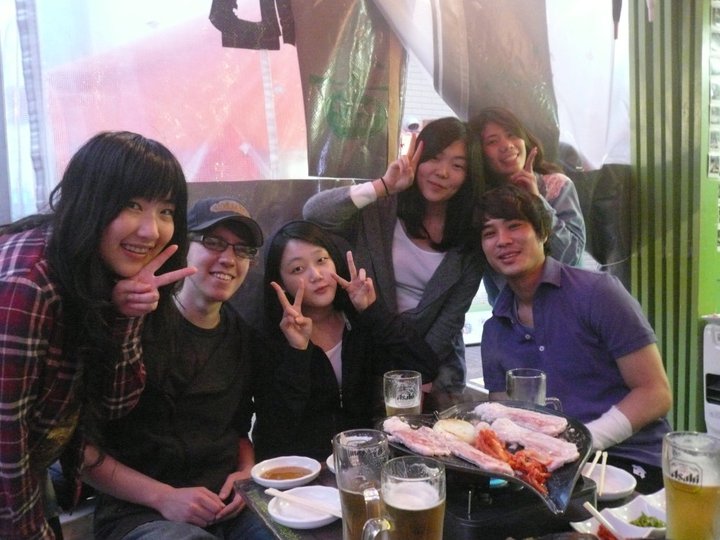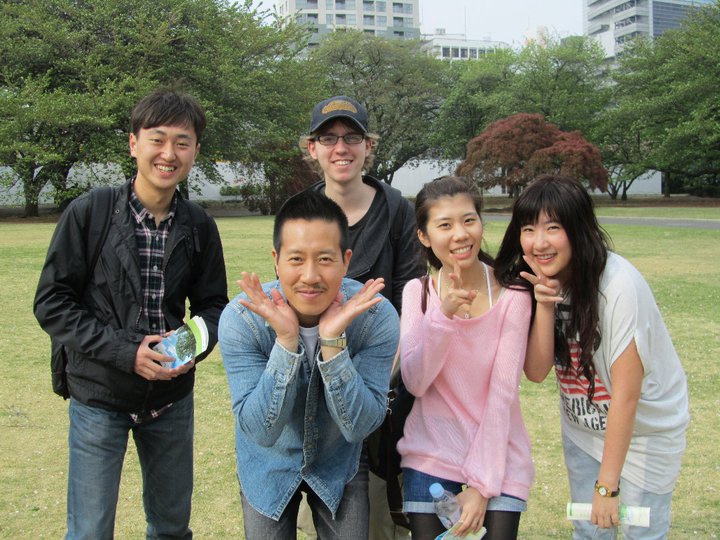
KCP Students Visit Shinjuku Gyoen National Garden and Shin Okubo
KCP student Steven Z. Edwards recently sent us some photos of his time at KCP and his forays into Japan.
KCP is located in the Shinjuku area of Tokyo, and it is only natural that Steven and his classmates would pay its National Garden a visit.
Shinjuku Gyoen National Garden
Shinjuku Gyoen National Garden is a convenient short walk from the Shinjuku-gyoemmae Station from the Maronouchi Line or Sendagaya Station on the Chūō-Sōbu Line. The garden was once home to the Naitō family (in the Edo period), who were powerful lords or Daimyo. The garden was once exclusive only to royalty. The park, severely damaged during World War II, has now been restored and showcases the magnificent flora and fauna of Japan.
On May 21, 1949, the garden was opened for the general public and was subsequently called “National Shinjuku Imperial Gardens.” It is now known as “Shinjuku Gyoen National Garden.”
KCP students Kakei, Khan, Steven, Erng, and Pla go on a class Hanami trip to the park.| KCP at Flickr
The opulent garden is a favorite place for hanami, or the spring viewing of the beautiful cherry blossoms. It draws large crowds, both tourists and locals. Shinjuku Gyoen National Garden spans 58.3 hectares and embraces three horticultural styles: Japanese traditional, French formal, and English landscape. It boasts at least 20,000 trees, 1500 of which are cherry trees such as Weeping Cherry, Kanzan Cherry, and Tokyo Cherry. Others are tulip trees, Himalayan cedars, and cypress trees.
KCP student Steven under a lush sakura tree. | KCP at Flickr
Shin Okubo
KCP students also went to Shin Okubo (more popularly known as Koreatown) in Tokyo. Shin Okubo Station is on JR East Yamanote Line in Shinjuku Ward and about 3 minutes on foot from Okubo Station on Chuo Sobu Line.
Many Koreans migrated to Japan after World War II, which led to the development of Koreatown. It is a lively and busy area filled with a maze of smaller streets that lead to the main street, Okubo Dori.
KCP students Pla, Steven, Anna, Kyeongmi, Erng, and Tae Hoon in Koreatown. | KCP at Flickr
The streets are filled with predominantly Korean shops and some Chinese and Thai shops and restaurants. There are also residential areas comprised of apartment buildings and hotels.
It’s a popular hangout for the younger Japanese. It is also known to draw many K-pop fans of Korean soap operas, movies, and song groups such as Big Bang and Girls Generation. The demand for Korean actors, actresses, and singers has invaded many households in Japan, especially those with teenagers.
Stay tuned for more of Steven’s experiences!



